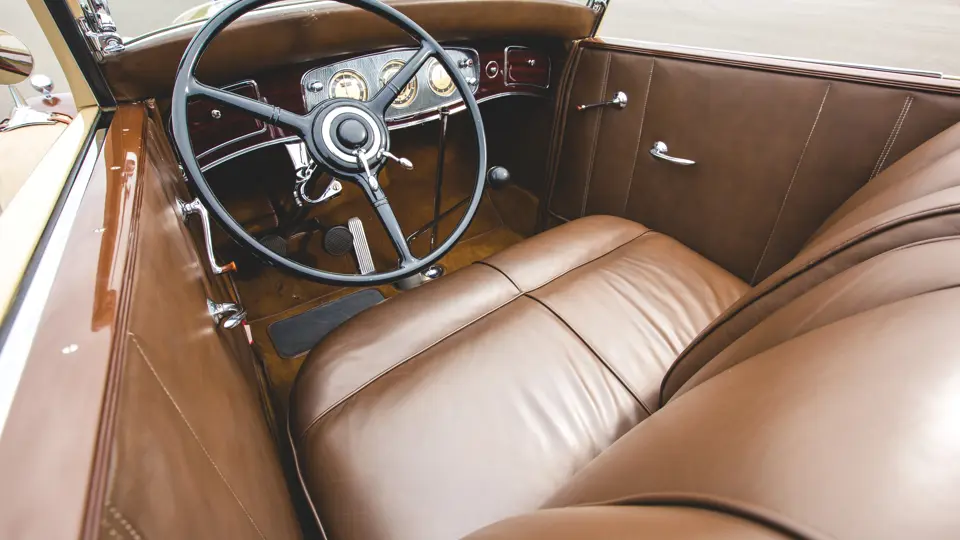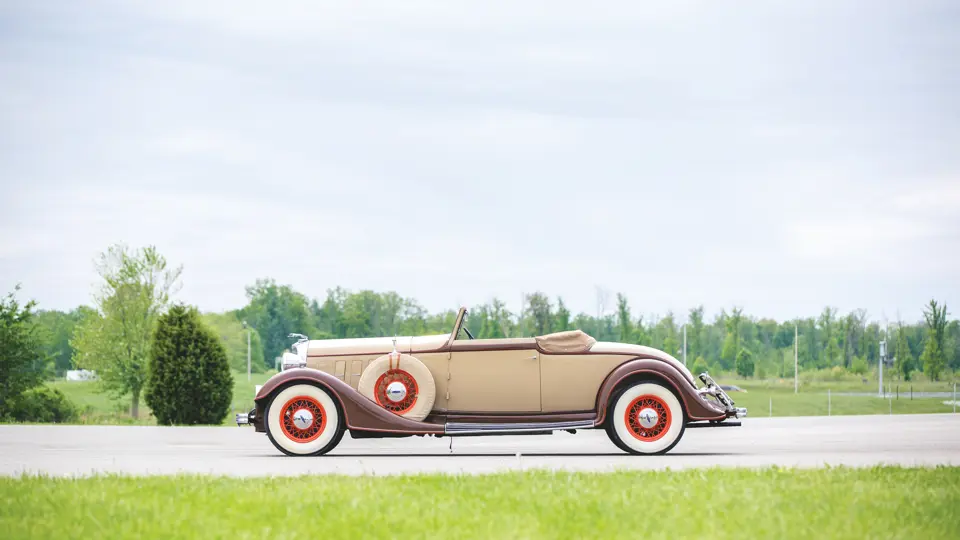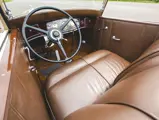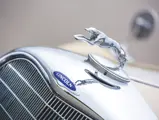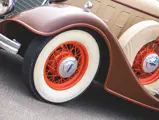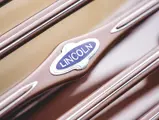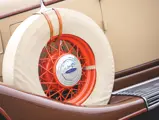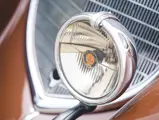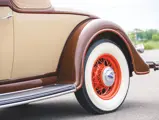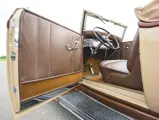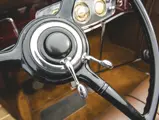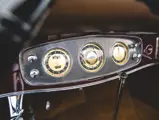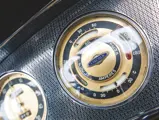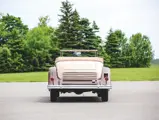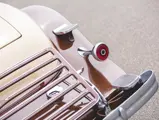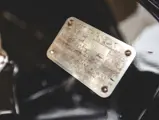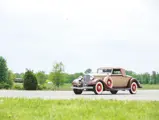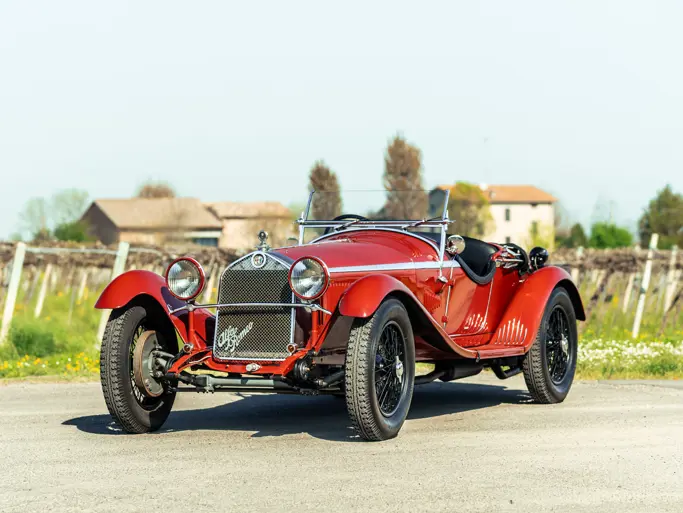150 bhp, 414 cu. in. L-head V-12 engine, three-speed manual transmission, solid front and live rear axles with semi-elliptical leaf-spring suspension, and four-wheel power-assisted mechanical brakes. Wheelbase: 145 in.
The success of the Lincoln Motor Company is largely attributed to Henry Ford, who purchased the company for eight million dollars in 1922. Lincoln became the flagship of Ford’s automotive empire, its fortunes entrusted largely to Henry’s son Edsel. Edsel Ford was an aesthete and had developed relationships with the prominent coachbuilders of the day: Locke, Willoughby, LeBaron, and Brunn, the last of which had already established a Lincoln relationship in the Leland days. As time went on, some of these bodies were catalogued as so-called “semi-custom” offerings.
For 1932, Lincoln took a page from the Cadillac playbook and introduced a V-12 engine in the new KB model. But where Cadillac’s was a 45-degree overhead-valve unit of 368 cubic inches making 135 brake horsepower, Lincoln went for a 65-degree L-head displacing 447.9 cubic inches. Lincoln fully committed itself to 12-cylinder power in 1933. A new “small” V-12, a 67-degree unit displacing 382 cubic inches and abandoning Lincoln’s hallmark fork-and-blade rods, replaced the V-8 in the KA, Lincoln’s entry-level car. KBs kept the 447.9-cubic inch fork-and-blade engine but adopted a new cruciform double-drop chassis frame.
For 1934, there was a new engine, a 414-cubic inch version of the former KA powerplant. It was used in all Lincolns, the KA and KB designations now distinguishing the wheelbases: 136 inches for the KA and 145 for the KB. There were 26 different body styles, both factory and semi-custom. Among the most attractive was the Style 287, a convertible roadster built by LeBaron, sitting on the massive 145-inch wheelbase, which makes for exceptionally sporting proportions with the long hood and short deck. Only 45 convertible roadsters were built in 1934.
This car features the very attractive, new-for-1934 hood with five thermostatically controlled doors on each side. Lincoln’s iconic, graceful Greyhound mascot radiator cap tops the radiator shell, which was specially ordered in chrome instead of the body-colored painted shell that was standard in 1934. The front ensemble is enhanced by a pair of Pilot Ray lights. The body is finished in attractive light cream with a matching Haartz cloth top and chocolate brown fenders, with distinctive orange wheels and pinstriping. The interior is full leather in chocolate brown, matching the fenders.
The Lincoln has been shown competitively and has won numerous awards. In 2013, it was returned to Al Prueitt and Sons for a mechanical and cosmetic freshening. The aluminum cylinder heads were replaced with a pair of new heads. During this process, the engine was carefully inspected and tuned, including the main and rod bearings, and found to have very little wear.
A rare LeBaron “semi-custom” example, this Lincoln offers the very best of the Classic Era with both superb styling and 12-cylinder power.




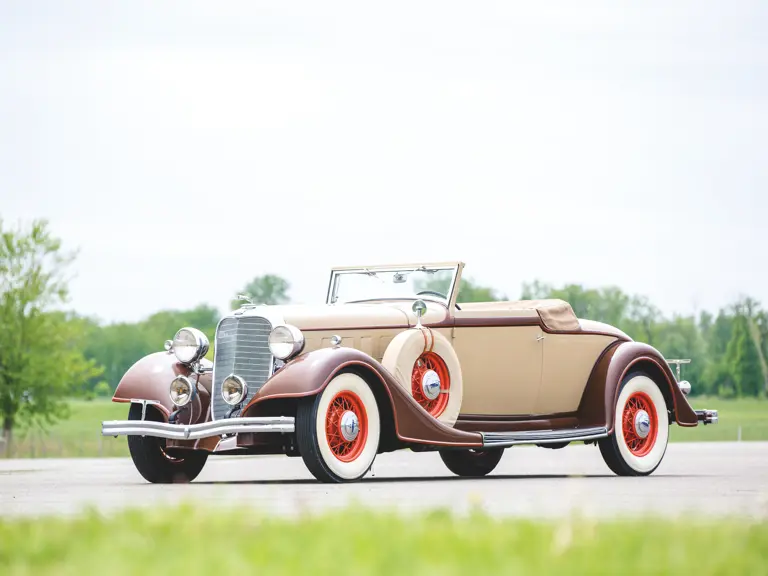
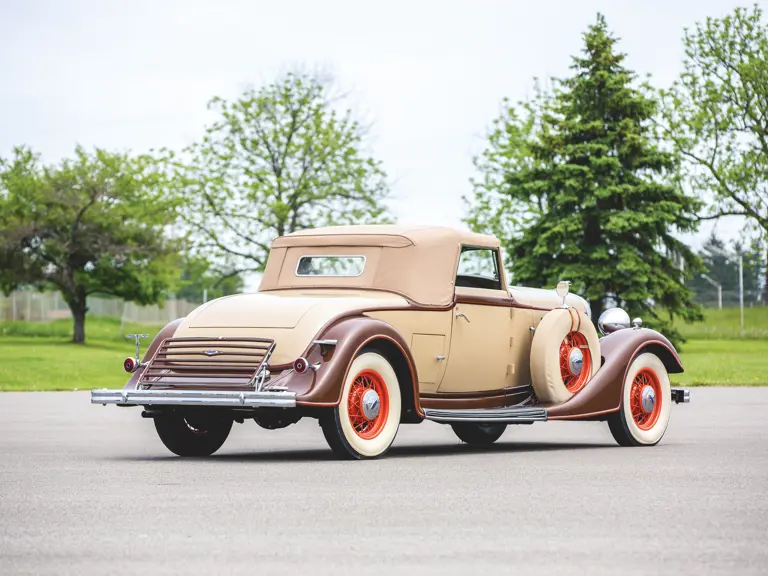
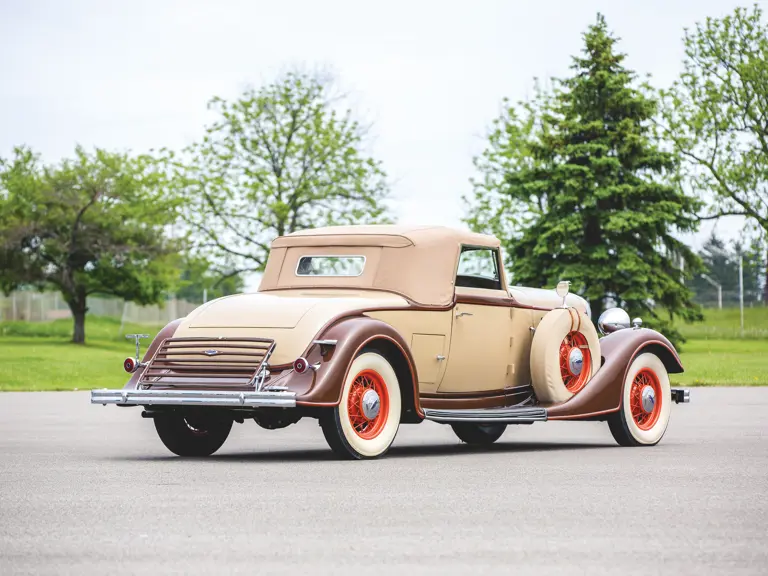
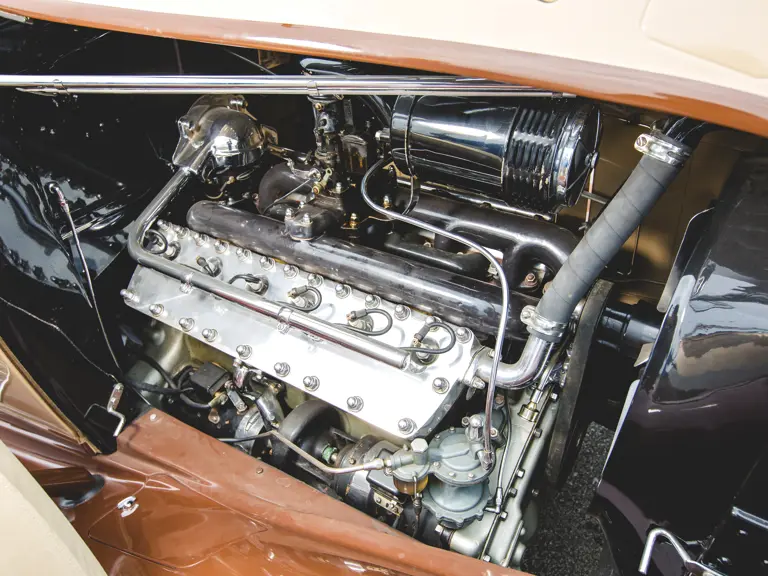
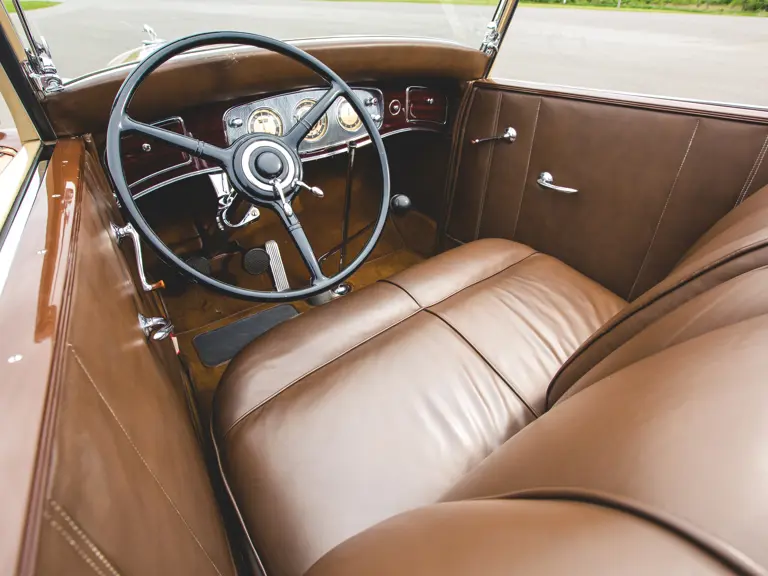
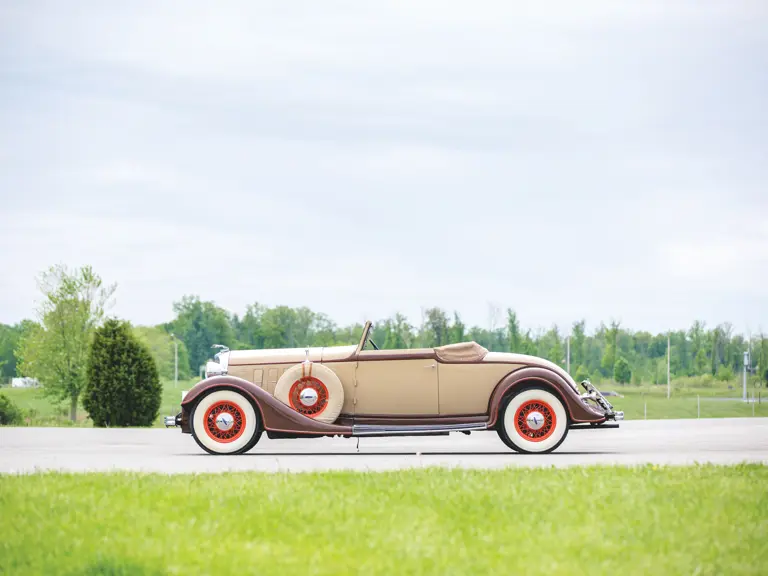
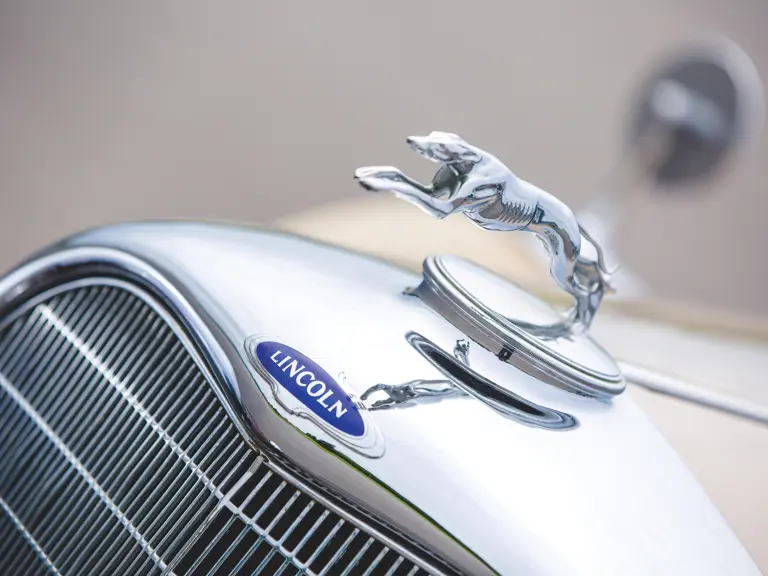
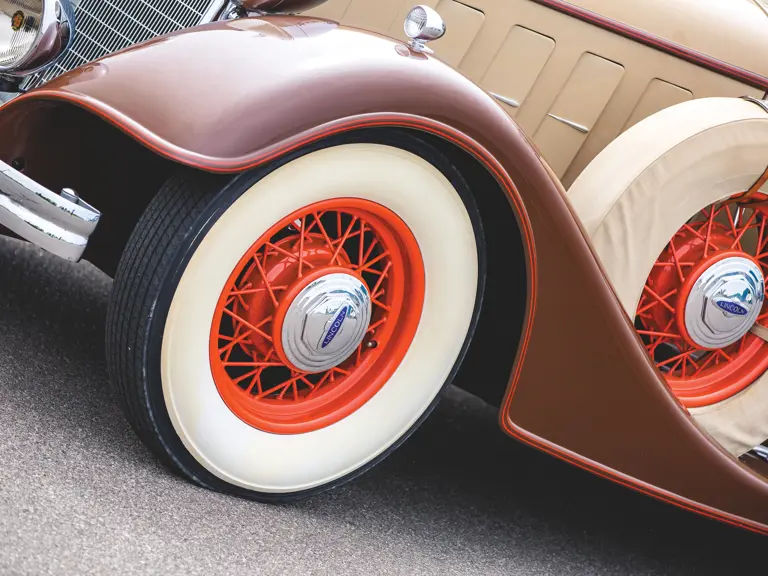
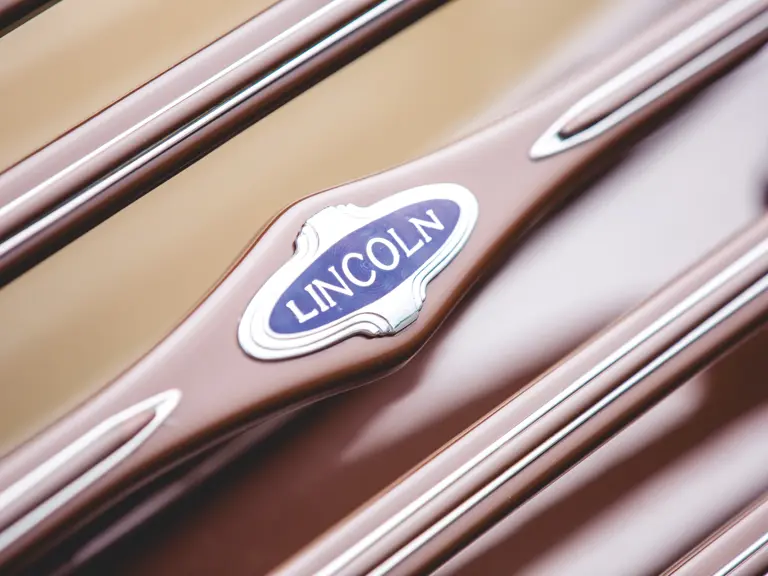
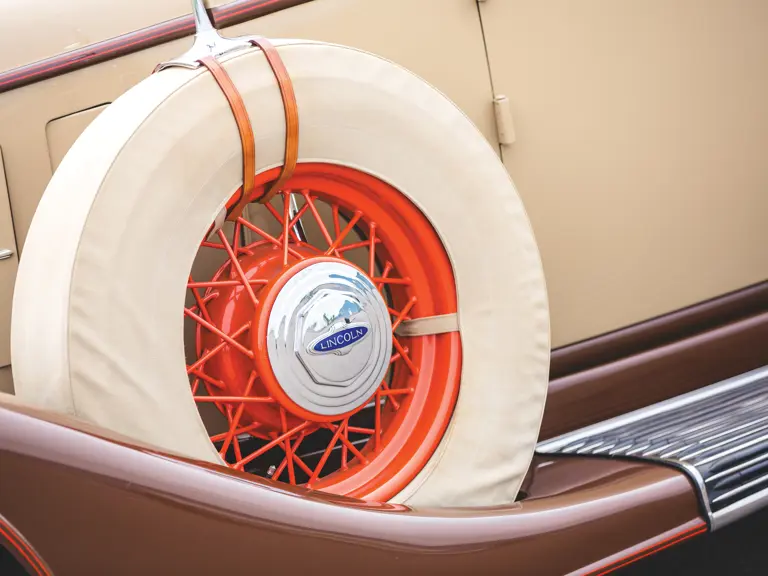
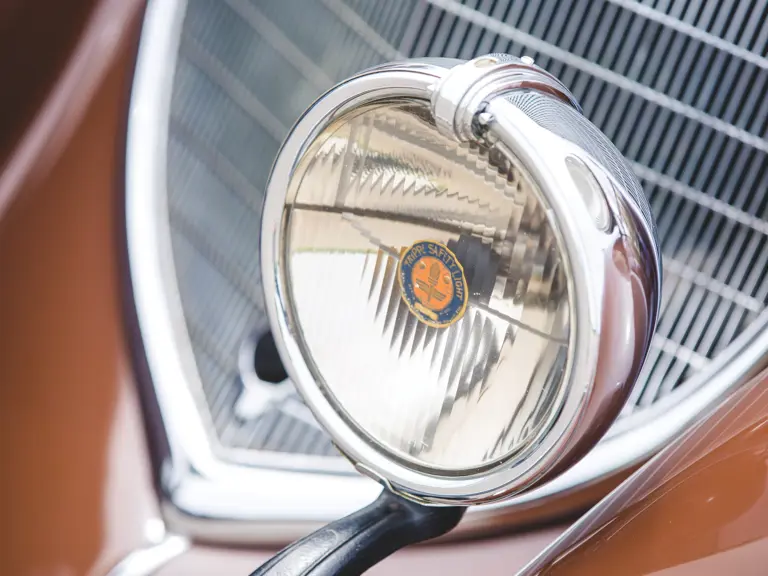
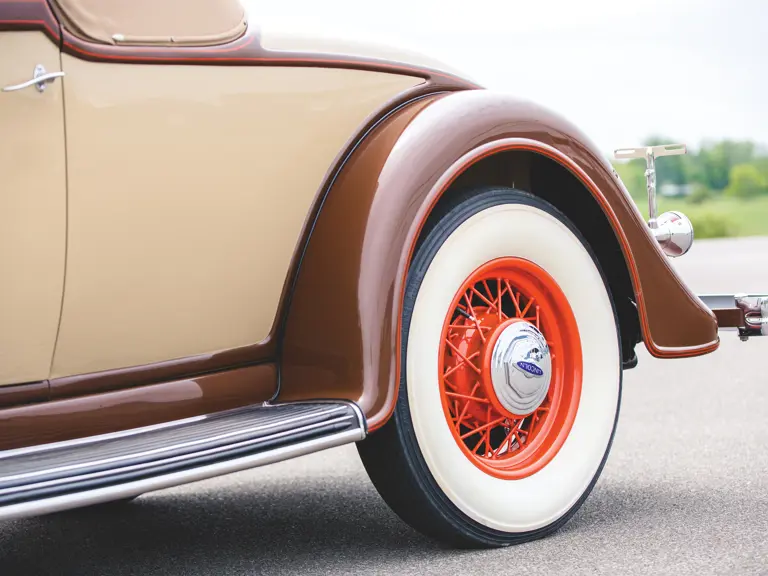
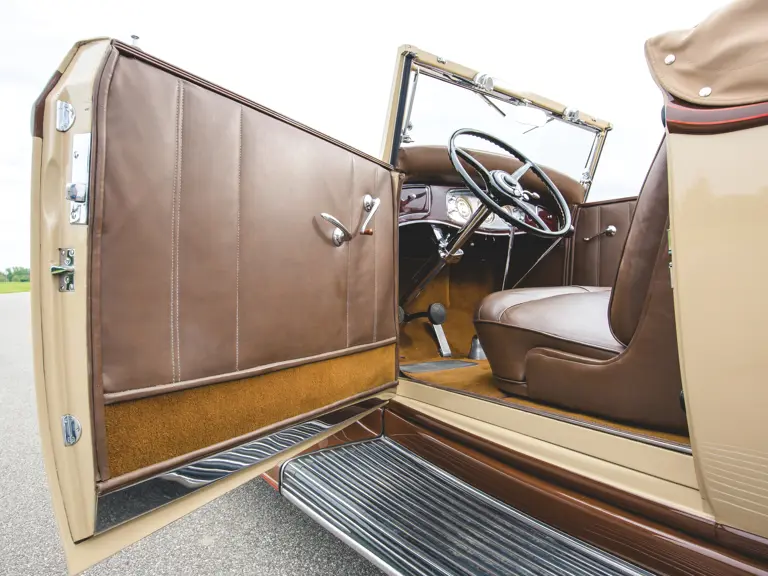
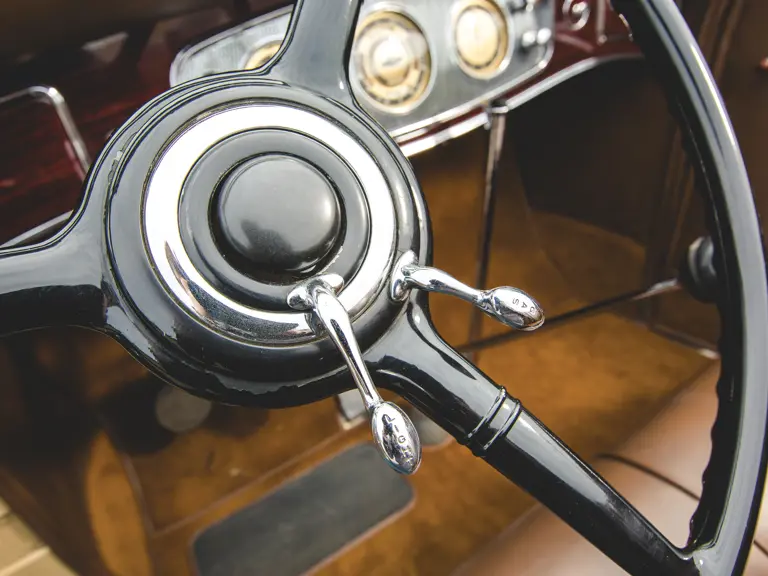
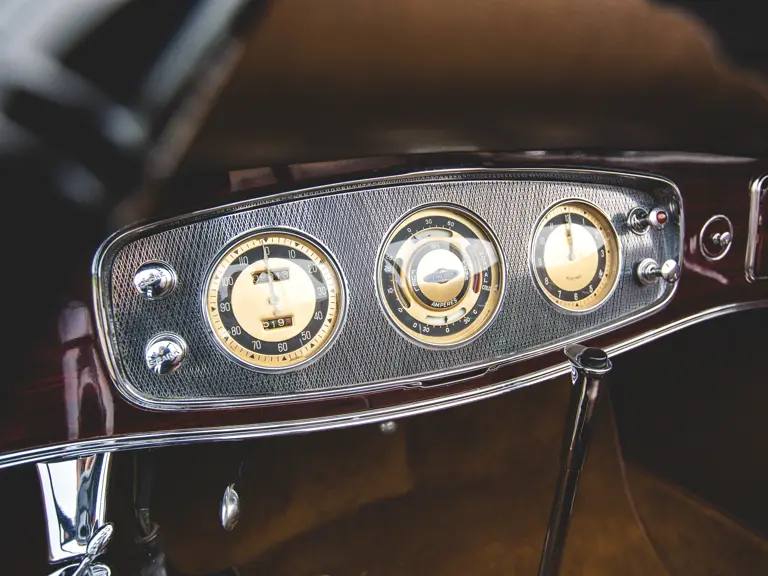


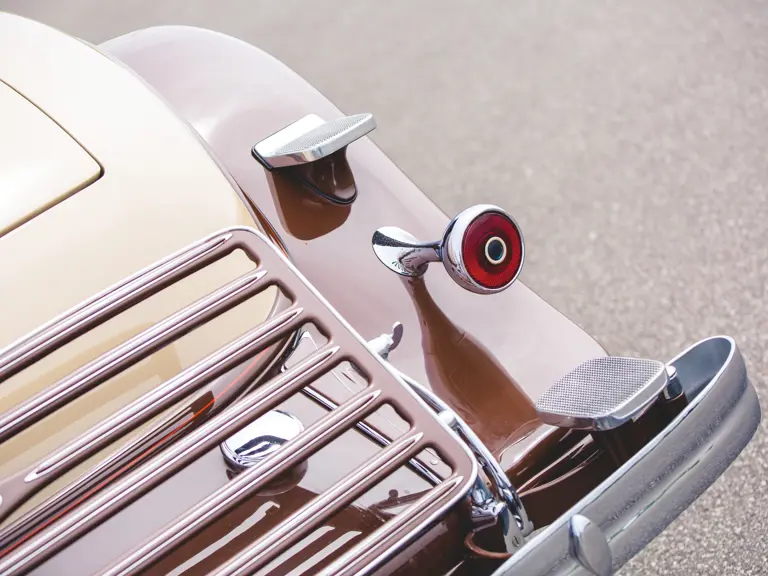
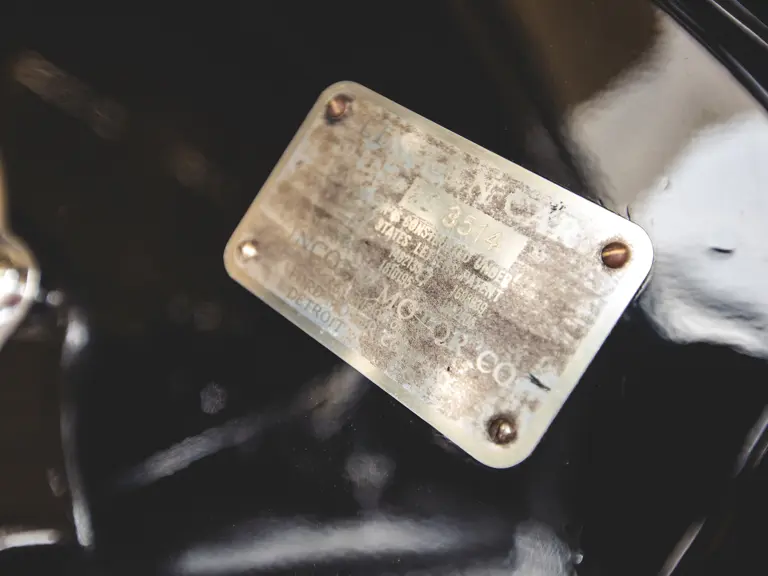
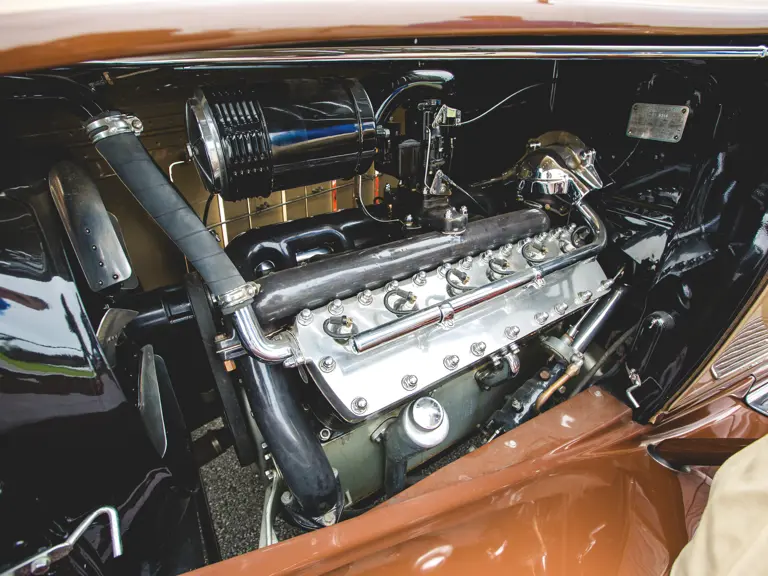
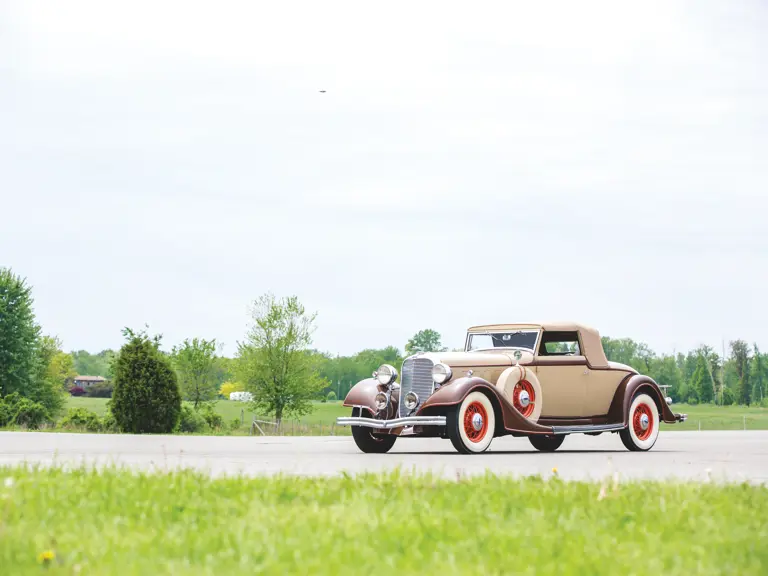
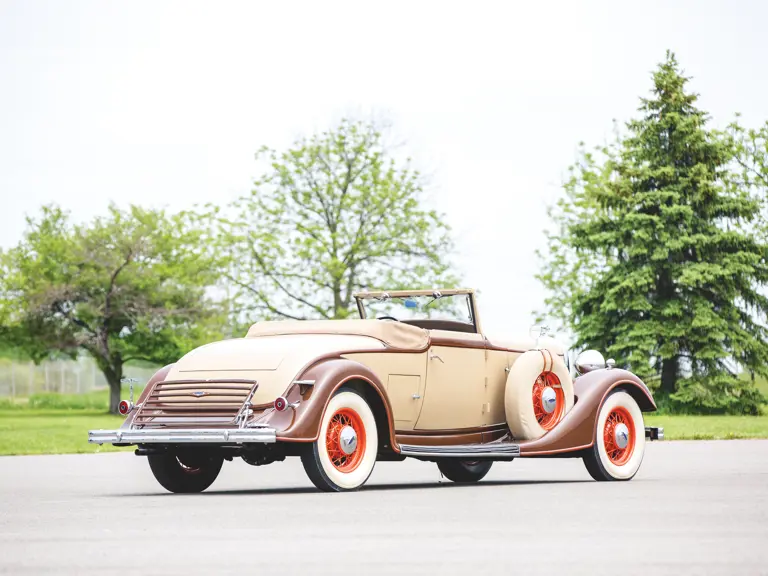
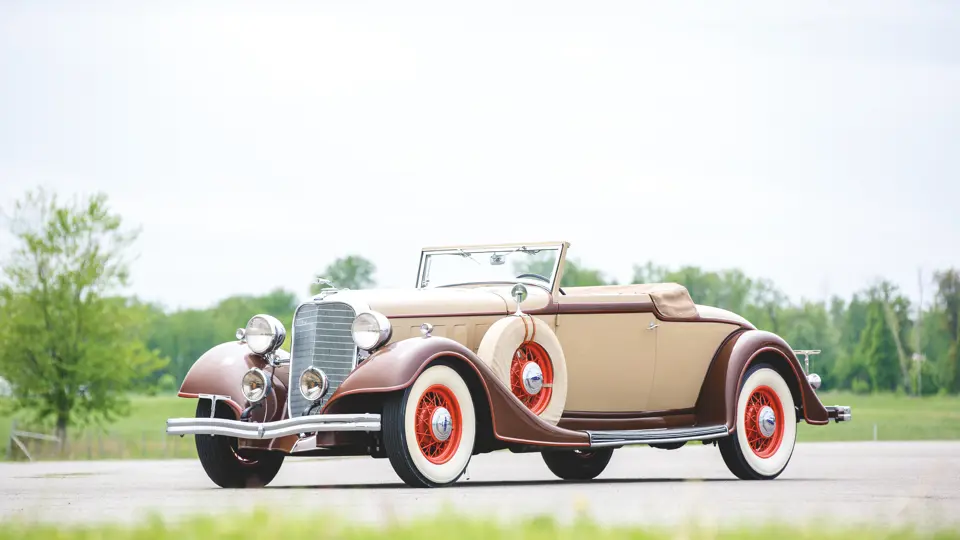
 | Plymouth, Michigan
| Plymouth, Michigan
